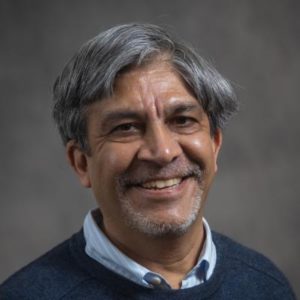“Epitaxial growth of heterostructures for topological spintronics“
 Abstract:
Abstract:
The confluence of fundamental symmetries (such as time reversal
invariance) and relativistic quantum mechanics is known to produce
emergent electronic states in crystalline solids that are accurately
described using the language of topology. This talk shows how the
synthesis and study of epitaxially grown topological quantum
materials and their heterostructures [1] yields interesting questions
and insights into the interplay between spin and charge transport, providing an attractive path toward spintronic technologies that work under ambient conditions [2-6]. This work is sponsored in part by SMART, a funded center of nCORE, a Semiconductor Research Corporation (SRC) program sponsored by NIST, the Institute for Quantum Matter under DOE EFRC grant DE-SC0019331,
and the Penn State Two-Dimensional Crystal Consortium-Materials Innovation Platform (2DCCMIP) under NSF Grant No. DMR- 2039351.
Biography:
Dr. Samarth is Downsbrough Department Head and Professor of Physics at Penn State University. He obtained an undergraduate degree in physics from IIT Bombay and a Ph.D. in physics from Purdue University. He joined the physics faculty at Penn State in 1992 after work as a post-doctoral research associate and research faculty fellow at the University of Notre Dame. Dr. Samarth has pioneered the epitaxial synthesis of a variety of spin-based quantum materials, resulting in fundamental advances in our understanding of semiconductor spintronics, nanomagnetism,
topological materials, and quantum information. He is a Fellow of the American Physical Society, Fellow of the American Association for the Advancement of Science, and a recipient of Penn State’s Faculty Scholar Medal in the Physical Sciences and Penn State’s George Atherton Excellence in Teaching Award. He also received an Outstanding Physics Alumnus Award from Purdue University and an Outstanding Alumnus Award from IIT Bombay. He has served on the elected chair-line of the Division of Materials Physics of the American Physical Society.